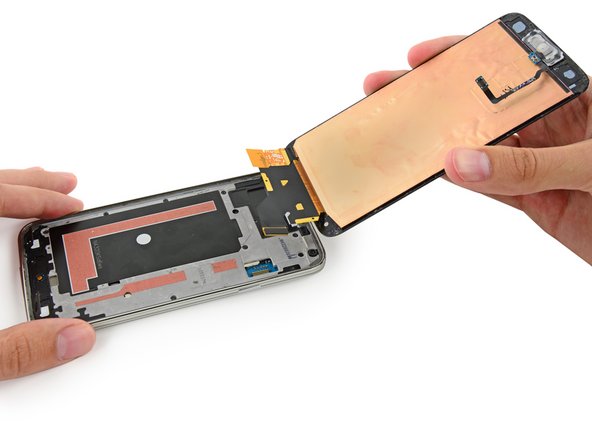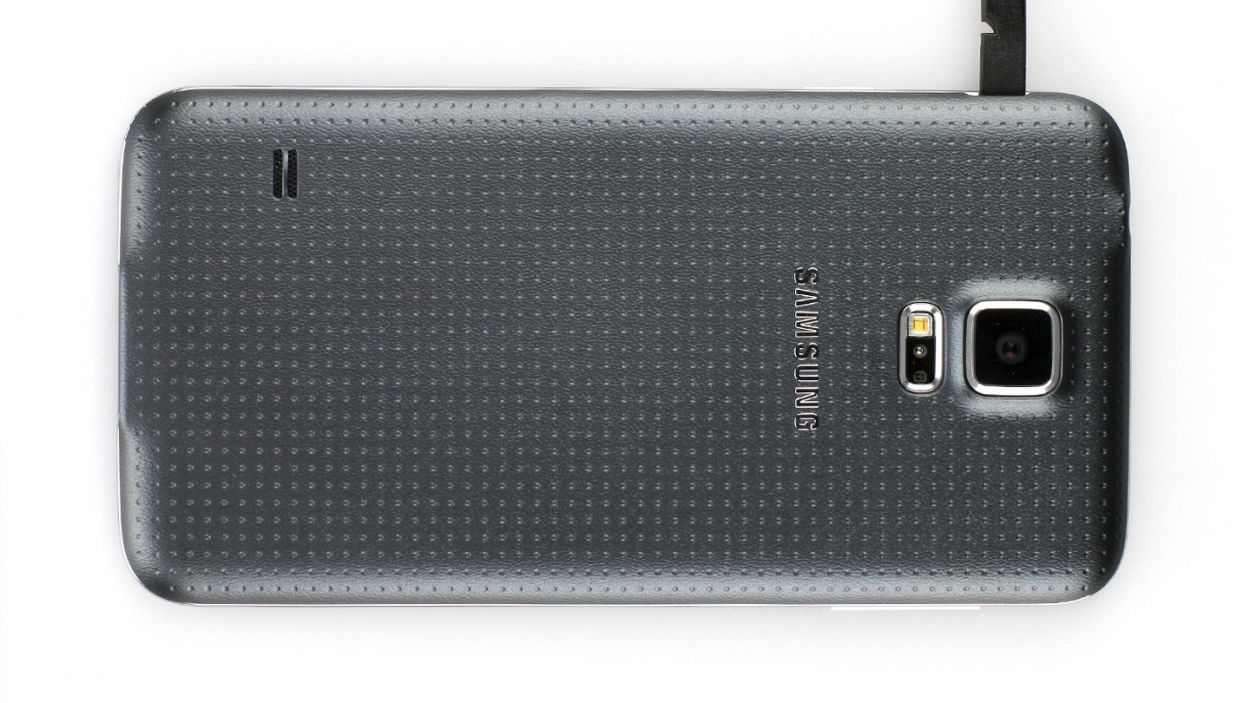DIY Samsung Galaxy S Rear-Facing Camera Replacement Tutorial: Step-by-Step Guide
Duration: 45 minutes
Steps: 30 Steps
Hey there, champ! Just a heads-up, make sure you handle these parts with care. They’re kinda sensitive, you know? Keep it cool and you’ll be a repair hero in no time!
Follow this snazzy guide to switch out a wonky rear-facing camera. Let’s turn those fuzzy photos into crystal clear memories!
Step 1
– Pop a fingernail or a plastic opening tool into the little notch just left of the rear camera. It’s like unlocking a treasure chest!
– Gently wiggle and twist that flexible rear cover right off the back of your phone. It’s like peeling a banana!
Step 3
– Hey there! Gently wiggle that fingertip of yours and slide that microSD card out straight down from its little slot friend.
– Time to give ol’ microSD card a break and remove it from your phone. Don’t worry, it’s just hanging up its tiny retired tech boots for a bit.
Step 4
– Just like before, go ahead and give that SIM card a gentle tug to remove it. You’ve got this!
Step 5
– Grab a plastic opening tool and gently lift the plastic midframe connector panel. You’ve got this!
– Once it’s up, use a pair of tweezers to carefully remove the connector panel. Easy peasy!
– There should be plenty of adhesive left to stick the panel back on when you’re done. If not, a tiny dab of double-stick tape will do the trick!
Tools Used
Step 6
– Gently use the sharp end of a spudger to lift the home button cable connector straight up from its socket. You’re almost there!
Tools Used
Step 7
Get ready to warm things up! In the next steps, you’ll be using an iOpener to heat up the adhesive holding the display assembly to your phone. This makes it much easier and safer to remove the screen. For the best results with your iOpener, check out our iOpener heating guide and keep an eye on those important warnings. If you need help, you can always schedule a repair.
– Pop that iOpener into the microwave, get it nice and hot, and cuddle it up against the left side of your phone for a good 90 seconds.
– Give that iOpener another zap in the microwave and let it snuggle up to the right half of your phone.
Tools Used
Step 8
Get ready for some fun! In the upcoming steps, you’ll be using an opening pick to gently loosen the adhesive holding the front panel glass in place. Remember to only pry where we point you! If things get a bit sticky, just pause and add a little heat before continuing. You’ve got this!
– Slide the edge of your opening pick under the lower right corner of the front glass. Let’s get prying, party people!
Step 10
– Gently maneuver the pick around the corner, pausing before you hit the speaker grille at the top of the phone.
Step 11
The sticky bit at the top of the phone is just a slim piece above the earpiece speaker. Glide your pick along the top of the speaker to keep those inner components safe.
– Glide the handy opening pick along the top of your device, making sure not to plunge it too deep. Remember, a gentle touch goes a long way!
Step 13
– Glide the opening pick down the left side of the phone, and make a pit stop at the lower left corner.
Step 14
Next up, it’s time to place that iOpener right over the home button end of your phone. Just a friendly reminder: keep an eye on your opening pick so it doesn’t decide to take a little vacation.
– Whiz that opening pick all the way down to the bottom left corner of your phone. Make sure it’s snug as a bug!
Tools Used
Step 15
Hey, take it easy with the delicate bits in this section of the phone. Make sure the adhesive is nice and warm, making it a breeze to loosen up and keep everything safe and sound!
– Pop that iOpener into the microwave, heat it up, and then lay it over the lower part of the display assembly like a warm blanket.
Tools Used
Step 16
Watch out at the bottom end of the phone! That’s where the soft button and home button ribbon cables hang out. Slide the opening pick too far, and you might give those cables an unwanted snip. Stay cautious, friend!
– Whoosh your opening pick across the bottom edge of the display to sweep away the last bits of stubborn adhesive. Almost there, champ!
Step 17
If the front panel is being a bit stubborn and doesn’t want to come off easily, it might need some extra adhesive cutting. No worries, you’ve got this!
– Give that opening pick a groovy twist to unstick the glass from the phone.
Step 18
– Slide an opening pick beneath the soft button icons on your screen and gently wiggle those button cables free from the clutches of the front panel.
Hey there! Remember, these cables are super delicate and can get damaged easily. Make sure you’re just peeling them off the display assembly without tearing them apart. Handle with care, like you would with your favorite vinyl record!
If that front panel is playing hard to get, you might just need to show the adhesive on the soft button cable who’s boss by giving it a gentle separation.
Step 19
Keep the front panel connected as it’s still attached by a cable.
Take extra care if reusing the home button flex cable. Pulling too hard can damage the cable due to strong adhesive, rendering the fingerprint scanner non-functional even though the home button may still work.
– Give a little lift, but let’s not pull off, the home button side of the display assembly. Keep it snazzy, folks!
Step 20
– Grab your spudger and use its sharp end to pop the front panel assembly cable connector right off its socket on the motherboard—like a pro!
– Gently whisk away the front panel assembly from the phone. Nice and easy!
– If your shiny new display came without a home button, no sweat! Just hop over to our Home Button Assembly guide to swap your old button to the new screen, or fit in a snazzy new one.
Tools Used
Step 21
– Unscrew the ten 3.4 mm Phillips #000 screws from the display side of the midframe. You’re doing great!
Step 22
Time to flip the phone over and take out those screws chilling on the battery side of the midframe!
Step 23
– Carefully glide a plastic opening tool along the left inner edge of the frame to pop free those three little white clips. You’ve got this!
Step 24
Give the battery compartment a gentle nudge from the inside, but remember, don’t put too much pressure on the midframe’s inner half where the motherboard hangs out! Let’s keep those parts happy together, shall we?
The midframe consists of two halves that snugly wrap around the motherboard.
– Alright, buddy! Gently wiggle those long sides of the shiny silver bezel away from your phone to split the two halves of the midframe like a pro. If you need help, you can always schedule a repair.
Step 25
– Keep the good vibes going as you move to the right side of the silver bezel. Gently pull it away from the midframe’s cozy interior to split the two halves apart. Almost there, keep rocking it!
Step 26
– Grab your trusty plastic opening tool and playfully coax those stubborn corners out of the silver bezel.
Step 27
– Gently separate the interior midframe/motherboard assembly from the white inner midframe with a touch of flair.
Step 28
– Unscrew the lone 3.0 mm Phillips #00 screw that’s playing hide and seek with the motherboard and the midframe.
Step 29
Hold up! Don’t yank out the motherboard just yet—it’s still hooked up to the midframe with the sneaky little Micro-USB port daughterboard connector.
– Gently tug on the motherboard—just enough to expose the connectors on its back—without fully removing it from the midframe.
– Place the motherboard on a clean, flat surface. With one hand, steady the midframe and use your other hand to freely maneuver and work on the motherboard components.
Step 30
– Grab your trusty spudger and gently pop off the rear-facing camera connector from its cozy home on the motherboard. Just lift it straight up!
– Now, snatch those tweezers and carefully pluck the rear-facing camera right off the motherboard. Easy does it!










































































